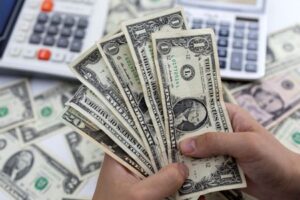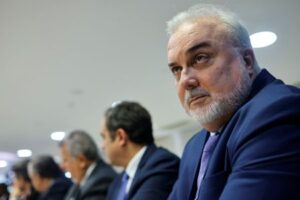By Howard Schneider
WASHINGTON (Reuters) – Since the Federal Reserve decided to keep interest rates on hold at its June 13-14 policy meeting, U.S. central bank officials have given every indication they are ready to approve another small rate increase when they gather again next week.
But recent data suggesting inflation has begun to slow in a faster and more persistent way will likely intensify their debate over whether the coming move will be the last one needed, with policymakers honing in on the key issue of whether the economy has fully absorbed the impact of the aggressive monetary tightening to date or is only beginning to adjust.
In one case, more rate increases might be needed to ensure “disinflation” continues; in the other, weakened price pressures are already in the pipeline, and doing more could cause unnecessary damage to the economy and the job market.
Officials’ rhetoric has leaned towards further hikes beyond the July 25-26 meeting, when the Fed’s policy-setting committee is expected to raise the benchmark overnight interest rate by a quarter of a percentage point to the 5.25%-5.50% range.
Fed Chair Jerome Powell has noted the majority view that two additional rate increases would be needed, and Governor Christopher Waller made the case for tighter policy in the central bank leadership’s final remarks before the blackout on public comments ahead of this month’s meeting.
Last year’s rate increases “should hit economic activity and inflation much faster than is typically predicted,” Waller said, and thus “we can’t expect much more slowing of demand and inflation from that tightening.” While recent inflation data was encouraging, he said, “one data point does not make a trend.”
Economists typically see the impact of monetary policy peaking at around 18 to 24 months after rate changes, but Fed officials have noted that their use of “forward guidance” to flag the path of policy means market rates adjusted well in advance of the rate hikes they rolled out beginning in March of 2022.
Other Fed officials have hewed to the main strategic thrust of keeping rate-hike options open and not giving investors room to think the central bank is finished – undercutting the battle against inflation with looser financial conditions as a result.
But arguably for the first time since the Fed’s first quarter-percentage-point rate hike in March 2022, the possibility that this upcoming move will be the last one has gained traction beyond the wishful thinking of investors and started to be supported by incoming data.
‘NEW EQUILIBRIUM’
Beyond the softened pace of consumer price increases in June, reports on import prices and producers’ input costs were both weaker than expected.
The producer price index, in particular, suggests consumer inflation could keep slowing. The drop in import prices is important to Fed hopes that out-and-out declines in goods prices, which soared during the coronavirus pandemic, could offset service-sector inflation that has typically been higher and “stickier,” even before the pandemic.
So far, this has occurred without major disruption in the job market, which sports a still-low unemployment rate of 3.6% and is spinning out new jobs and wage growth at rates higher than before the pandemic. A central point in the Fed debate is whether that amounts to a risk – a reason for inflation to remain high as households spend rising incomes – or a positive surprise that needs to be nurtured with patience about future rate moves.
The current situation “still leaves us with the question whether inflation can settle while consumers are still spending and the labor market remains this robust,” Richmond Fed President Thomas Barkin said last week. The weak June inflation reading left him unconvinced it is on a steady downward path.
Yet signs of a new status quo appear to be emerging in the job market, whether in the ongoing drop in the ratio of available workers to open jobs, a recent rise in the prevalence of part-time work, or in subtler signals.
While the number of food service and accommodations industry workers remains a few percentage points below the pre-pandemic peak, for example, the industry’s contribution to real gross domestic product has increased from that point: It is doing more with less and may not need 2019 headcount levels.
“There are more and more hints of ‘soft landing,’ heading to a new equilibrium,” said Nick Bunker, research director at the Indeed Hiring Lab, referring to a scenario in which monetary tightening slows the economy, and inflation, without triggering a recession. “It is trending towards a steadier but still-strong labor market” that echoes conditions from 2019, with participation rates recovering, a sustainable job-creation pace, and wages rising for less-well-paid occupations.
‘STRANGE BUSINESS CYCLE’
Until the Fed declares its inflation war at an end, however, economists and market analysts say risks to a benign outcome will remain.
Jason Furman, a Harvard University professor who was the top White House economic adviser in the Obama administration from 2013 to 2017, still sees the underlying rate of inflation, by the Fed’s preferred measure, running around 3.5%.
“At 3.5%, July won’t be the last time the Fed hikes,” Furman said in an interview. “I think we have learned almost nothing about what it will take to get inflation from 3.5% to 2% … My worry is that the last leg might require additional unemployment.”
Ed Al-Hussainy, senior rates analyst at Columbia Threadneedle, meanwhile, is skeptical that the impact of rapid rate hikes has already been absorbed.
“We have managed to generate this decline in inflation, that seems to be becoming more persistent, without doing a lot of damage,” he said. “Why?”
Key rate benchmarks have on an inflation-adjusted basis shifted from negative to sharply positive, and “I think we have not seen the full effects” of that, he said. “To say we have the same economy with real rates at negative 2% as we do at positive 2%, I don’t buy it.”
Fed officials have acknowledged data could be shifting in their favor, but it will take time for policymakers to accept what they are seeing as genuine and “lean in” to the idea that a soft landing may be in sight, Atlanta Fed President Raphael Bostic said earlier this month. Believing policy is operating with a long lag, Bostic favors holding rates steady.
Chicago Fed President Austan Goolsbee, speaking to CNBC earlier this month, said policymakers shouldn’t be shy to show faith in an economy that has consistently surprised.
“The premise is we need a recession to eliminate inflation,” Goolsbee said. “I don’t think that … This was a very strange business cycle.”
(Reporting by Howard Schneider; Editing by Dan Burns and Paul Simao)





